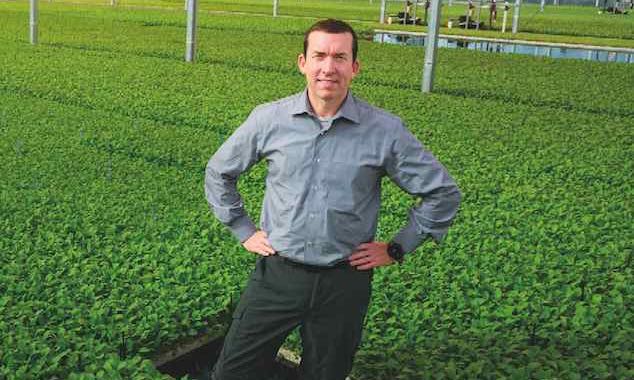In 2011, BrightFarms welcomed Paul Lightfoot as CEO. Under Paul’s direction, BrightFarms moved forward with its mission of providing fresh and local food to the greater public. With large-scale greenhouses operating in Bucks County, PA, Kansas City, MO, Elkwood, IA, and most recently, Rochelle, IL, BrightFarms has created partnerships with food retailers to deliver its produce to the greater community. Food Tank spoke with Paul Lightfoot to discuss how BrightFarms provides consumers with local and nutritional food.
Food Tank (FT): What inspired you to become involved in the local food movement?
Paul Lightfoot (PL): I was yearning to combine my personal passion with my career. I had become increasingly zealous in how I fed myself and my family while in my 30s, and by the time I reached 40 I was ready to bet my career on bringing Americans food that was healthier and better for both them and the planet. Now I’m 45, and thrilled to be delivering on that vision for our supermarket partners’ hundreds of thousands of customers (and my wife and kids!) through BrightFarms.
FT: In your opinion, what sets BrightFarms apart as a source for local produce?
PL: BrightFarms is unique in that we are able to provide local produce on a commercial scale, backed by institutional investors. We have a business model that, put plainly, delivers better produce—produce that is local, fresher, and more sustainable—at about the same price as the long-distance produce that we’re displacing from supermarket shelves. Our production is reliable, high quality, food safe, and profitable. And our produce is delicious!
FT: Why does BrightFarms utilize hydroponic farming for its food?
PL: We use hydroponic systems because we only grow food in the same communities in which the food will be consumed. Therefore, we need a controlled environment (not exposed to weather) to achieve year-round production, and we need to have extremely high productivity per square foot. Growing hydroponically in greenhouses enables BrightFarms to thrive in that context, and it enables us to deliver better testing and fresher produce using 75 percent less land, 90 percent less water, 98 percent less shipping fuel, and less overall energy.
FT: BrightFarms recently launched a large greenhouse project serving the greater Chicago area. Are there currently plans for further expansion to more locations nationwide?
PL: Yes, we are first opening—this fall—a project in the Washington D.C. market for our partner Ahold USA, selling our produce at their Giant Food stores and their Peapod home delivery service. We intend to focus on successfully ramping-up the Chicago and D.C. greenhouses for the first half of 2016, and then will embark an even more aggressive growth trajectory in the latter part of 2016 and beyond.
FT: The BrightFarms product offerings currently focus on fresh greens. Why were local vegetables chosen as a starting point for BrightFarms?
PL: We only compete in categories where we can replace a long-distance and complex supply chain with a shorter and simpler supply chain that is better for the product (fresher, tastier), better for the environment, and profitable. Salad greens and tomatoes are a great place to start because of their long supply chains and high degrees of perishability. As an example, the fact that supermarket salad greens nearly all come from California and Arizona is an outdated and inefficient model: not only are they less fresh, they are worse for the planet. There is a lot of room for improvement on the traditional salad greens supply chain model, and we are achieving—and in many ways pioneering—that improvement.
FT: Do you see future potential for the BrightFarms model as a solution to providing local produce to limited access areas or food deserts?
PL: Perhaps in the future, but for now we are focused on serving the needs of the large Midwest and Northeast population centers, which are almost always thousands of miles from their salad greens and tomato suppliers.
FT: What role can BrightFarms play in expanding public knowledge of the benefits of local food consumption?
PL: Local is the number one demand trend in both restaurants and supermarkets, so I think that the public is already aware of the benefits of local food. People want to know where their food comes from, and they want to know that it is produced responsibly. What we can do is help consumers fulfill that demand by giving them produce that is great tasting and good for them, that is produced in a more sustainable manner, and that supports their local economy with green collar jobs that pay a living wage. We feel good helping people feel good about their food choices.













